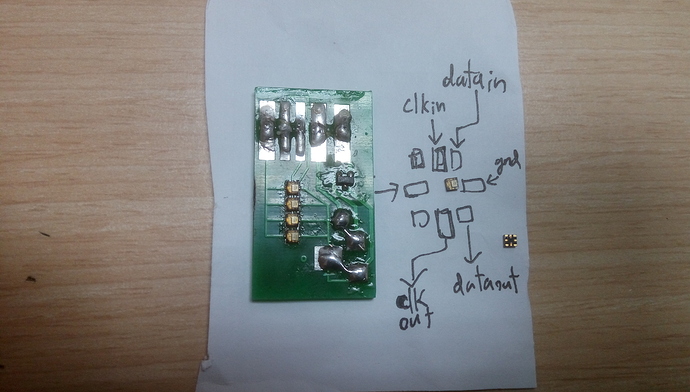thanks for your awareness, I know, and power was planned to be separated with N-channel mos
Apa102 were widely used in POV projects, mostly sold in 5050 package LED strips
and this is not my first POV, likely 5th if i count.  2020 is not friendly for hand solder,
2020 is not friendly for hand solder,
got a hot air gun&paste and already experienced with success air-soldering
I pick 2020 because it’s small, can do dense POV, and its simple integrated driver
with a 18650 Lithium battery I got my POV with 72 apa102 -5050LEDs working well
I hope 100s of them, in 2020, work well too,
If not, I’ll parallel a second battery, 
oh about part creation,
maybe I just can’t hold inkscape crashing all the time,
I can draw my own board shape(and inkscape mess it up often)
but part’s kinda much for me yet
breaking up to pads works well with easy/small parts to me,
most likely due to I use strange parts, such like some switchs(like those in hand-flashlights) , they dont have pins or leads, not a PTH/SMD part in general.
and needs custom designed pads for soldering, depends on how I’m using them. 
@Old_Grey sure, select all trace and change
are there group and layer like those features in PS/Sketchup/CAD in Fritzing?
if not, its still kinda better for me to set traces for each in this case,
I got my power lines as wide as possible, and SPI lines to 8-12 mils as they’re under the part, short and don’t need to be wide.
thanks for all 




 2020 is not friendly for hand solder,
2020 is not friendly for hand solder,



